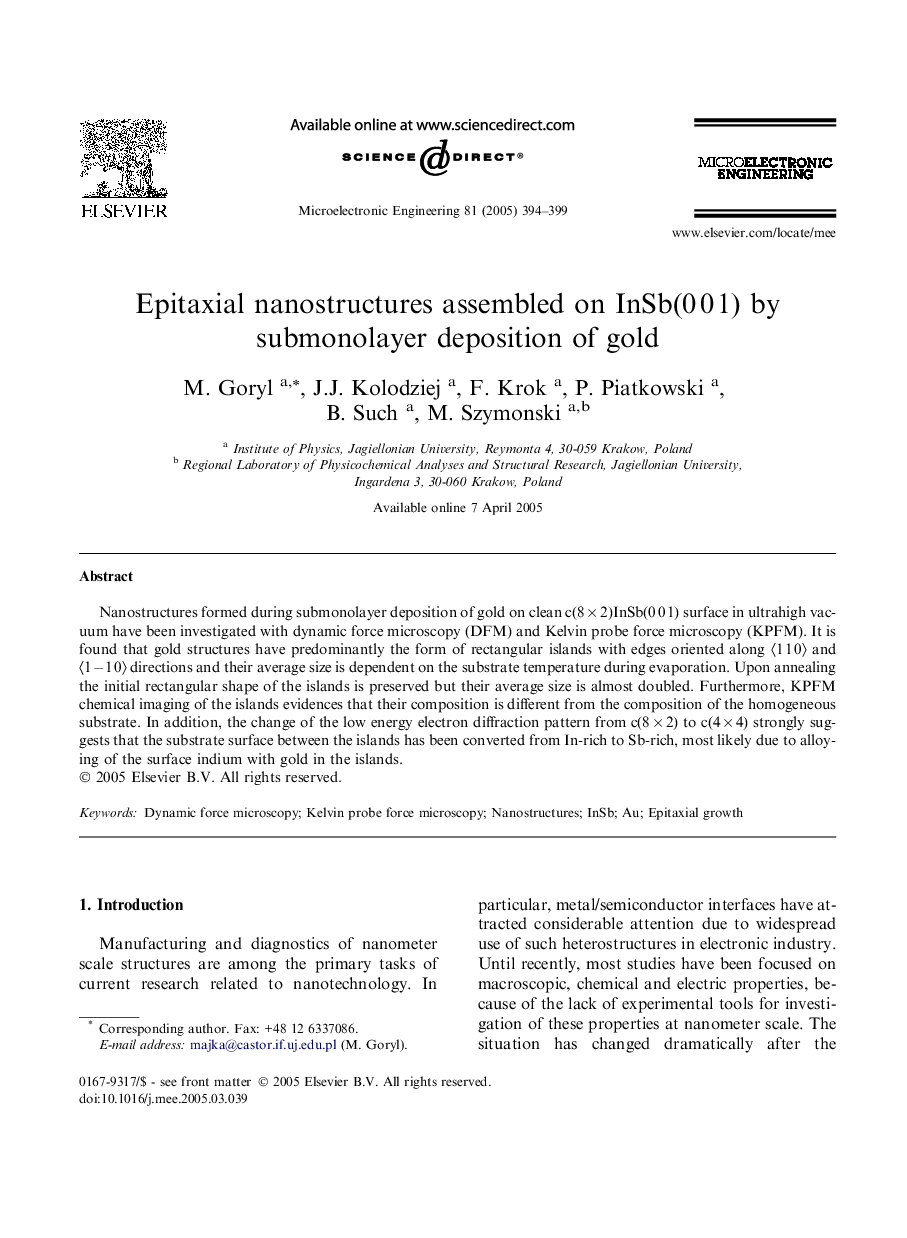| Article ID | Journal | Published Year | Pages | File Type |
|---|---|---|---|---|
| 9670418 | Microelectronic Engineering | 2005 | 6 Pages |
Abstract
Nanostructures formed during submonolayer deposition of gold on clean c(8Â ÃÂ 2)InSb(0Â 0Â 1) surface in ultrahigh vacuum have been investigated with dynamic force microscopy (DFM) and Kelvin probe force microscopy (KPFM). It is found that gold structures have predominantly the form of rectangular islands with edges oriented along ã1Â 1Â 0ã and ã1Â â1Â 0ã directions and their average size is dependent on the substrate temperature during evaporation. Upon annealing the initial rectangular shape of the islands is preserved but their average size is almost doubled. Furthermore, KPFM chemical imaging of the islands evidences that their composition is different from the composition of the homogeneous substrate. In addition, the change of the low energy electron diffraction pattern from c(8Â ÃÂ 2) to c(4Â ÃÂ 4) strongly suggests that the substrate surface between the islands has been converted from In-rich to Sb-rich, most likely due to alloying of the surface indium with gold in the islands.
Related Topics
Physical Sciences and Engineering
Computer Science
Hardware and Architecture
Authors
M. Goryl, J.J. Kolodziej, F. Krok, P. Piatkowski, B. Such, M. Szymonski,
